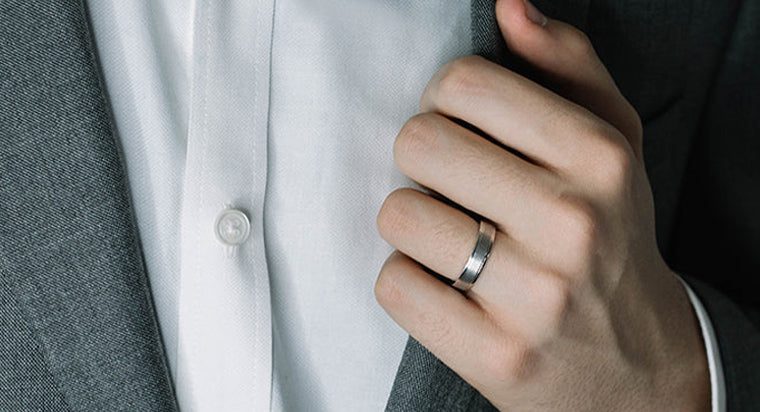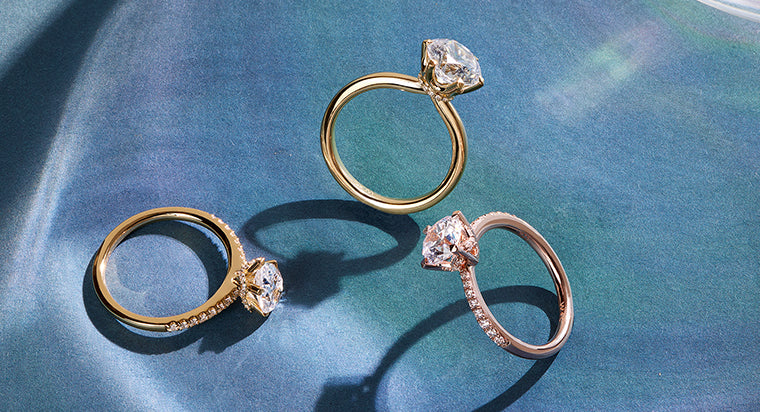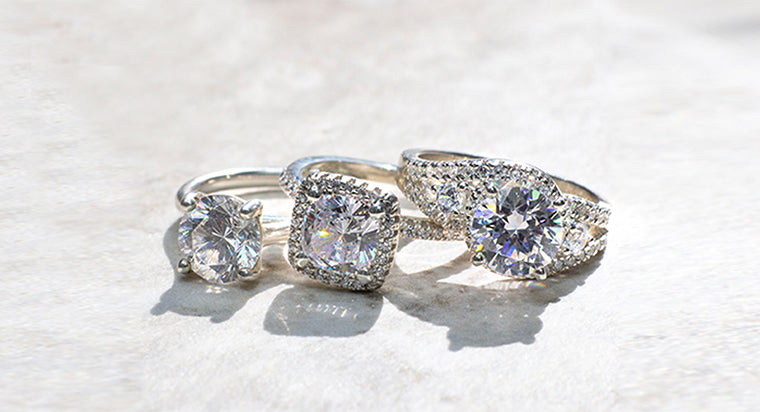18kt Gold Guide

Introduction
One of the choices you’ll make when selecting jewelry is the metal. The metal affects the design, and also impacts the jewelry’s durability and cost. While you’ve likely heard of gold and platinum, you might not be as aware of the ins and outs of 18kt gold. Keep reading if you’d like to learn about 18kt so you can choose the best metal for your needs.
If you're considering a romantic gem such as this, here's what you need to know.
What is 18kt gold?
Before we dive in, it’s important to explain the “k” that accompanies yellow, white, and rose gold. In jewelry, the ‘karat number’ grading system designates purity when measuring gold. As an example, 24kt gold is 100% pure, 18kt gold is 75% pure gold, and 14kt is 58.3% gold. Both 14kt and 18kt gold have alloys (added metals) to make the metal more durable. The more pure gold in the metal, the softer it will be.
Gold has been around for thousands of years. It was used by cultures in modern day Eastern Europe in 4000 BC to make decorative objects. For a couple thousand years, gold was used to create things such as jewelry and idols for worship. This was the case until around 1500 BC. That’s when the ancient empire of Egypt, which benefited greatly from its gold-bearing region, Nubia, made gold the first official medium of exchange for international trade.
Though heart-shaped diamonds have never reached the popularity heights of the round brilliant, they are still sought after by couples who want a non-traditional stone.
How is 18kt gold made?
The alloys impact whether the gold is yellow, white, or rose gold. Common alloys include nickel, silver, and copper. For rose gold, the copper in the alloy creates the pink or rose-colored hue. White gold is alloyed with silver or palladium and then typically plated with rhodium in order to make it even stronger and give white gold jewelry a brighter appearance.
Pros and cons of 18kt gold
Gold is beautiful, and 18kt gold has a rich, vibrant color based on its amount of pure gold. Another advantage of 18kt gold is it’s less likely to trigger allergies or skin irritations because it has a higher percentage of gold. In terms of cons, 18kt gold can scratch and dent more easily because of its high gold content. If you want an 18kt gold ring, choose when you wear it carefully so you don’t damage it. Higher gold content also means that 18kt gold will be more expensive than 14kt but not as expensive as 24kt gold.
Uses of 18kt gold
Today you’ll see 18kt gold used in a variety of ways. Watches and other jewelry features 18kt yellow, white, and rose gold. Gold conducts electricity, does not tarnish and is very easy to work so it’s also used in other areas beyond jewelry. It can be made into wire, hammered into thin sheets, and melted and cast into highly detailed shapes. One surprising use for gold is in computers. Gold edge connectors are used to mount microprocessor and memory chips onto the motherboard as well as the plug-and-socket connectors used to attach cables. The gold in these components is generally electroplated onto other metals and alloyed with small amounts of nickel or cobalt to increase durability. It’s no wonder gold has provided many uses for thousands of years!
Caring for 18kt gold
Your 18kt jewelry is precious and deserves care to make it last a lifetime. Avoid aggressively cleaning your jewelry and harsh chemicals. Instead, soak gold jewelry in soap and water before gently scrubbing off grime with a soft brush. Here are some additional tips in caring for your gold jewelry:
- Remove your gold jewelry before showering, exercising, bathing, or cleaning. The exposure to soap and chemicals can dull your gold. This can also scratch or break down the gold, which is a soft metal and easily damaged.
- Avoid swimming with your 18kt jewelry.
- Store your gold jewelry separately from other pieces. Don’t allow any other jewelry near your 18kt gold pieces when they’re being stored. You don’t want it scratched or dented from your other jewelry..
- If storage is tight, wrap each piece in a soft cloth.
- Hang up gold chains if possible. This prevents them from getting tangled and damaged from untangling.
- Buff your gold jewelry occasionally. Buffing it occasionally is a good way to maintain the luster of your jewelry without cleaning it. Use a soft chamois cloth and gently rub the surface of the piece.
The Takeaway
Gold is a popular metal with a deep history, and it’s a valuable metal used in a variety of industries, such as technology and jewelry. Its beauty, affordability, durability, and luster makes it a popular metal for jewelry. For 18kt gold, it’s made of 75% of pure gold, which gives it a rich, vibrant color. The higher percentage of gold prevents it from triggering skin allergies to metals but also makes the jewelry more expensive and slightly softer. With care and periodic maintenance, you can keep your 18kt gold jewelry beautiful and pristine so it’ll last a lifetime. .
FAQs
Yes, 18kt gold is durable and will last a lifetime.
Both 14kt and 18kt are durable metals. Jewelry with 14kt has more alloy so it’s considered more durable for the everyday wear of engagement rings. It’s also good for active lifestyles.









